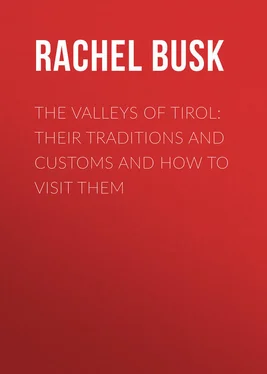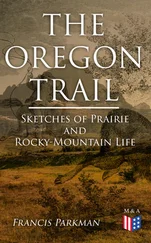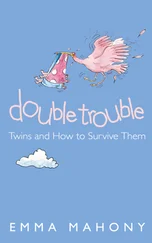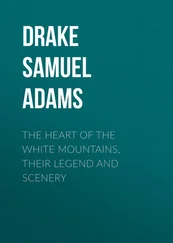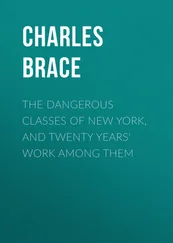Rachel Busk - The Valleys of Tirol - Their traditions and customs and how to visit them
Здесь есть возможность читать онлайн «Rachel Busk - The Valleys of Tirol - Their traditions and customs and how to visit them» — ознакомительный отрывок электронной книги совершенно бесплатно, а после прочтения отрывка купить полную версию. В некоторых случаях можно слушать аудио, скачать через торрент в формате fb2 и присутствует краткое содержание. Жанр: foreign_antique, foreign_prose, Путешествия и география, на английском языке. Описание произведения, (предисловие) а так же отзывы посетителей доступны на портале библиотеки ЛибКат.
- Название:The Valleys of Tirol: Their traditions and customs and how to visit them
- Автор:
- Жанр:
- Год:неизвестен
- ISBN:нет данных
- Рейтинг книги:3 / 5. Голосов: 1
-
Избранное:Добавить в избранное
- Отзывы:
-
Ваша оценка:
- 60
- 1
- 2
- 3
- 4
- 5
The Valleys of Tirol: Their traditions and customs and how to visit them: краткое содержание, описание и аннотация
Предлагаем к чтению аннотацию, описание, краткое содержание или предисловие (зависит от того, что написал сам автор книги «The Valleys of Tirol: Their traditions and customs and how to visit them»). Если вы не нашли необходимую информацию о книге — напишите в комментариях, мы постараемся отыскать её.
The Valleys of Tirol: Their traditions and customs and how to visit them — читать онлайн ознакомительный отрывок
Ниже представлен текст книги, разбитый по страницам. Система сохранения места последней прочитанной страницы, позволяет с удобством читать онлайн бесплатно книгу «The Valleys of Tirol: Their traditions and customs and how to visit them», без необходимости каждый раз заново искать на чём Вы остановились. Поставьте закладку, и сможете в любой момент перейти на страницу, на которой закончили чтение.
Интервал:
Закладка:
This story seemed to me to belong to a class not unfrequently met with, but yet differing from the ordinary run of legends on this subject, inasmuch as the spirits, who were generally believed to be bound to earth in penance, were released by no act of Christian virtue, and without any appeal to faith; and I could not help asking my old friend if he did not think this very active clever pedlar might have been one of those who according to his own version had indulged in freebooting tendencies, and that having with a true Zillerthaler’s tendencies pined to return to his native valley, he had invented the tale to account for his accession of fortune, and the nature of his possessions. I think my friend was a little piqued at my unmasking his hero, but he allowed it was not an improbable solution for the origin of some similar tales.
Prizes, he went on to tell me, are often set up for excellence in these games, which are cherished as marks of honour, without any reference to their intrinsic value. And so jealously is every distinction guarded, that a youth may not wear a feather or the sprig of rosemary, bestowed by a beloved hand, in his jaunty hat, unless he is capable of proving his right to it by his pluck and muscular development.
Dancing is another favourite recreation, and is pursued with a zest which makes it a healthful and useful exercise too. The Schnodahüpfl and the Hosennagler are as dear to the Zillerthaler as the Bolera to the Andalusian or the Jota to the Aragonese; like the Spanish Seguidillas , too, the Zillerthalers accompany their dance with sprightly songs, which are often directed to inciting each other not to flag.
Another amusement, in which they have a certain similarity with Spaniards, is cow-fighting. But it is not a mere sport, and cruelty is as much avoided as possible, for the beasts are made to fight only with each other, and only their natural weapons – each other’s horns – are brought against them. The victorious cow is not only the glory and darling of her owner, who loads her with garlands and caresses; but the fight serves to ascertain the hardy capacity of the animals as leaders of the herd, an office which is no sinecure, when they have to make their way to and from steep pastures difficult of access. 58Ram and goat fights are also held in the same way, and with the same object.
The chief occasions for exercising these pastimes are the village festivals, the Kirchtag , or anniversary of the Church consecration, the Carnival season, weddings and baptisms, and the opening of the season for the Scheibenschiessen ; also the days of pilgrimages to various popular shrines; and the Primizen and Sekundizen – the first Mass of their pastors, and its fiftieth anniversary – general festivals all over Tirol.
A season of great enjoyment is the Carnival, which with them begins at the Epiphany. Their great delight then is to go out in the dusk of evening, when work is over, disguised in various fantastic dresses, and making their way round from house to house, set the inmates guessing who they can be. As they are very clever in arranging all the accessories of their assumed character, changing their voice and mien, each visit is the occasion of the most laughable mistakes. In the towns, the Carnival procession is generally got up with no little taste and artistic skill. The arch-buffoon goes on ahead, a loud and merry jingle of bells announcing his advent at every movement of the horse he bestrides, collects the people out of every house. Then follow, also mounted, a train of maskers, Turks, soldiers, gipsies, pirates; and if there happen to be among them anyone representing a judge or authority of any sort, he is always placed at the head of the tribe. In the evening, their perambulations over, they assemble in the inn, where the acknowledged wag of the locality reads a humorous diatribe, which touches on all the follies and events, that can be anyhow made to wear a ridiculous aspect, of the past year.
Christmas – here called Christnacht as well as Weihnacht – is observed (as all over the country, but especially here) by dispensing the Kloubabrod , a kind of dough cake, stuffed with sliced pears, almonds, nuts, and preserved fruits. The making of this is a particular item in the education of a Zillerthaler maiden, who has a special interest in it, inasmuch as the one she prepares for the household must have the first cut in it made by her betrothed, who at the same time gives her some little token of his affection in return. Speaking of Christmas customs reminded my informant of an olden custom in Brixen, that the Bishop should make presents of fish to his retainers. This fish was brought from the Garda-see, and the Graf of Tirol and the Prince-bishop of Trent were wont to let it pass toll-free through their dominions. A curious letter is extant, written by Bishop Rötel, ‘ an sambstag nach Stæ. Barbaræ, 1444 ,’ courteously enforcing this privilege.
The Sternsingen is a favourite way of keeping the Epiphany in many parts of the country. Three youths, one of them with his face blackened, and all dressed to represent the three kings, go about singing from homestead to homestead; and in some places there is a Herod ready to greet them from the window with riming answers to their verses, of which the following is a specimen: it is the address of the first king —
König Kaspar bin ich gennant
Komm daher aus Morgenland
Komm daher in grosser Eil
Vierzehn Tag, fünftausend Meil.
Melchores tritt du herein. 59
Melchior, thus appealed to, stands forward and sings his lay; and then Balthazar; and then the three join in a chorus, in which certain hints are given that as they come from so far some refreshment would be acceptable; upon which the friendly peasant-wife calls them in, and regales them with cakes she has prepared ready for the purpose, and sends them on their mountain-way rejoicing. Possibly some such custom may have given rise to the institution of our ‘Twelfth-cake.’ In the Œtzthal they go about with the greeting, ‘Gelobt sei Jesus Christus zur Gömacht.’ 60Another Tirolean custom connected with Epiphany was the blessing of the stalls of the cattle on the eve, in memory of the stable in which the Wise Men found the Holy Family.
Their wedding fêtes seem to be among the most curious of all their customs. My friend gave me a detailed account of one, between two families of the better class of peasants, which he had attended some years back; and he believed they were little changed since. It is regarded as an occasion of great importance; and as soon as the banns had been asked in church, the bridegroom went round with a chosen friend styled a Hochzeitsbitter , to invite friends and relations to the marriage. The night before the wedding (for which throughout Tirol a Thursday is chosen, except in the Iselthal, where a preference for Monday prevails), there was a great dance at the house of the bride, who from the moment the banns have been asked is popularly called the Kanzel-Braut . ‘Rather, I should say,’ he pursued, ‘it was in the barn; for though a large cottage, there was no room that would contain the numbers of merry couples who flocked in, and even the barn was so crowded, that the dancers could but make their way with difficulty, and were continually tumbling over one another; but it was a merry night, for all were in their local costume, and the pine-wood torches shed a strange and festive glare over them. The next morning all were assembled betimes. It was a bitterly cold day, but the snow-storm was eagerly hailed, as it is reckoned a token that the newly-wedded pair will be rich; we met first at the bride’s house for what they called the Morgensuppe , a rough sort of hearty breakfast of roast meat, white bread, and sausages; and while the elder guests were discussing it, many were hard at work again dancing, and the young girls of the village were dressing up the bride – one of the adornments de rigueur being a knot of streamers of scarlet leather trimmed with gold lace, and blue arm-bands and hat-ribbons; these streamers are thought by the simple people to be a cure for goitres, and are frequently bound round them with that idea. At ten o’clock the first church bell rang, when all the guests hastily assembled round the table, and drank the health of the happy pair in a bowl from which they had first drank. Then they ranged themselves into a procession, and marched towards the church, the musicians leading the way. The nearest friends of the bridal pair were styled “train-bearers,” and formed a sort of guard of honour round the bride, walking bare-headed, their hats, tastily wreathed with flowers, in their hands. The priest of the village walked by the bride on one side, her parents on the other. She wore a wreath of rosemary – a plant greatly prized here, as among the people of Spain and Italy, and considered typical of the Blessed Virgin’s purity – in her hair; her holiday dress was confined by a girdle, and she held her rosary in her hand. The bridegroom was almost as showily dressed, and wore a crown of silver wire; beside him walked another priest, and behind them came the host of the village inn, a worthy who holds a kind of patriarchal position in our villages. He is always one of the most important men of the place, generally owns the largest holding of land, and drives one or two little trades besides attending to the welfare of his guests. But more than this, he is for the most part a man of upright character and pleasant disposition, and is often called to act as adviser and umpire in rural complications.
Читать дальшеИнтервал:
Закладка:
Похожие книги на «The Valleys of Tirol: Their traditions and customs and how to visit them»
Представляем Вашему вниманию похожие книги на «The Valleys of Tirol: Their traditions and customs and how to visit them» списком для выбора. Мы отобрали схожую по названию и смыслу литературу в надежде предоставить читателям больше вариантов отыскать новые, интересные, ещё непрочитанные произведения.
Обсуждение, отзывы о книге «The Valleys of Tirol: Their traditions and customs and how to visit them» и просто собственные мнения читателей. Оставьте ваши комментарии, напишите, что Вы думаете о произведении, его смысле или главных героях. Укажите что конкретно понравилось, а что нет, и почему Вы так считаете.
